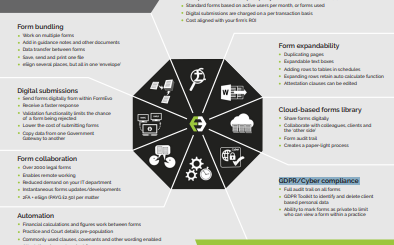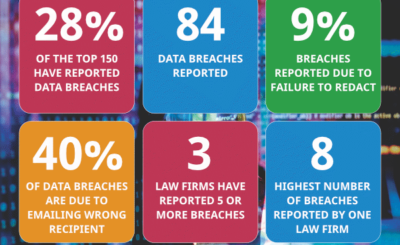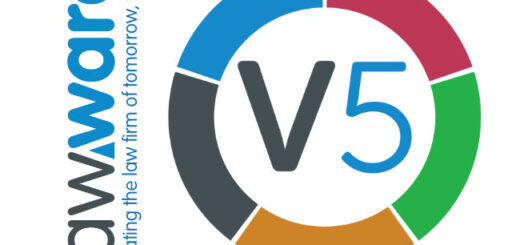Back to Basics — a Business Briefing for Lawyers: Productivity

Welcome to the latest edition of Back to Basics — a Business Briefing for Lawyers. This month the focus is on Productivity. The Oxford Dictionary defines Productivity as “the effectiveness of productive effort, especially in industry, as measured in terms of the rate of output per unit of input:” and in this month’s Briefing we will look at getting more out from the effort you’re putting in. Much of this means working with the resources you have and applying them properly to make sure that you can improve the productivity of the firm. If you’re not getting the best out of your resources then you are harming the productivity and, inevitably, the profitability of your firm. Take some time out to consider how you work on a daily basis and whether there are some things you might think about doing differently that will give you a productivity boost. If you need any help in creating systems or tools to assist you in your productivity efforts please get in touch with me—I’d be delighted to help.
Brian O’Neill LL.B MBA
Business Consultant
40c Drakemyre
Dalry
North Ayrshire
KA24 5JE
t. 07855 838395
Productivity
Every business must be conscious of the need to continuously improve its productivity and to apply its resources as effectively as it possibly can. Unfortunately, due to established working practices and inertia, many businesses fail to take advantage of the tools available to them and instigate the changes needed to achieve those aims. The resources of any business are precious, not least in the legal profession, where fee earner time is probably the most valuable resource. There are only 24 hours in every day—and, despite what the more young and energetic amongst us might think, we still need to sleep. After that, we’re left with somewhere between 16—18 hours every day to carry out a whole host of activities—washing, eating, drinking, getting dressed, relaxing—oh, and working!
To get the best out of the time you spend working it is absolutely essential that you are organised. You need to consider the other resources at your disposal—money is usually pretty high on the agenda as are the people who work with you. As with time, it’s highly likely that your money resource is not limitless. In the course of the last few years, money has been very “tight” for many, many legal practices and this has resulted in redundancies and short time working. As the recovery, such as it is, continues, it is important to consider all options to aid productivity rather than simply engaging more people. You are likely to have some form of office that you use—even if it’s a home office—and tools with which to do your work—a PC will probably feature in the mix somewhere as will, potentially, a Practice Manager system. Do you use these resources wisely…. properly…. at all? Finally you need to look at the processes you employ to carry out your day to day work. People say it’s hard to change and think about doing things differently.
If time is your most valuable resource and if you don’t use it properly you will lose it then it makes perfect sense to look at the ways you and those in your firms do things and work out the ways you could do things differently to employ your resources more effectively and improve not only your personal productivity but that of the firm as a whole. Improved productivity inevitably leads to improved profitability—after all, that’s what being in business is all about —isn’t it?
What are you going to do today?
In a previous issue of Back to Basics we looked at Objective Setting—and the need to write down your clearly defined objectives. This helps you to keep focused on what’s important to you and what you want to achieve in your business. Last month we looked at the Importance/Urgency Matrix that you can use to help you decide what parts of your work are top priority and which parts are unimportant. Another tool that many successful people employ is the To Do List—and not simply a list of all the things you need to do, but a To Do List that’s prioritised. To start off you need to list everything that you have to do—yes, everything. Then assign a priority to each item on the list, starting with A items and ending with F items. A items are the most impactful on your business and should be the things that will do most to help you achieve the objectives you’ve set. They might not always be the most urgent (but many are) but they will certainly be the most important to you. B items are not as important as A items but tend to support them whilst being more important than C Items. C Items are the third priority items which are less critical than A or B items. When it comes to D items, you really need to consider whether you should be doing these items at all.
By prioritising your A, B and C items you’re deciding that only you can do these things—and if, when reviewing your list you feel that there are some things on it that might be best dealt with by others, then demote them to Ds and delegate it to others. The E and F items on your list tend to be the “like to do” items and you need to consider whether you need to do these things at all! Once you’ve assigned each item a category you should then group all your A items together and prioritise the most important item in that group as A1. Decide on the next most important and assign it A2. You go thought your A list and assign a priority to each item. Then start to work on your highest priority item—your A1 item—and you don’t move on to any other item till your A1 item has been completed. Then move on to your A2 item and do the same thing. If something comes in during the day that you need to deal with (as it inevitably will), add it to your To Do List and determine its priority rather than just starting the task without thinking about it. Try to avoid distractions—particularly email distractions.
People tend to work with Outlook open, with prompts telling them a new email message has arrived. This is probably one of the biggest “attention thieves” that you are likely to come across. You should ring-fence some time each day to deal with email—and close down Outlook outwith those times—and if you can’t bear to be without Outlook being open, at least turn off the new message prompt! Solicitors work hard—it’s just sometimes they don’t work smart. Have a go at creating and using your very own Prioritised To Do List. Do this every day and watch your productivity soar!
Simon says…..
‘Performance’ is one of those often thought about aspects of running a law firm but one that is rarely attributed to any individual’s job description. Which is odd really because it can be easily measured, compared, analysed and then improved or worsened; by just a single decision. When I meet Partners of law firms to talk about IT, we often stray into other areas and a favourite question of mine is this – ‘in order to improve efficiency would you foresee doing more tasks yourself or delegating more tasks to others?’ By the way, there is no right or wrong answer – all 3 possible answers are perfectly acceptable (the 4th one involving not changing is obviously not acceptable). There are some common aspects of achieving an increase in the performance of all law firm staff. The quality of your Style Template Library is a vital component. I don’t mean simply having one. I mean having it in electronic form, having it available immediately to anyone that needs it, having all the common fields in-filled automatically from your client and case file information, storing the resultant letter or form automatically and distributing it electronically to the recipient – this would seem to me to be a utopia of performance. I rarely find it.
Even if you fell short in the final stage it would still be a tremendous leap up the performance ladder for the vast majority of law firms. A common failing of some Partners is the failure to agree on common styles for the firm itself to use, preferring instead to adopt individualistic forms of standard correspondence that fails to grasp any form of economy of scale that a basic Document Management system can provide. Some firms will be unwilling to invest any time or effort to produce a style library – fortunately there is an organisation called The Styles Bank that can supply ready-to-run Style Libraries that are kept up to date for you. I strongly suggest that you check them out. As I have suggested above having an automatic store of electronic documents – often referred to as a case management system – can make it easier for colleagues to retrieve files when you are out of the office and they are trying to cover for you.
This is doubly useful if you have also filed your emails in it as well (both Sent and Received). This means that there is a phenomenal reduction in staff time spent printing and filing (always a challenge in itself) and then locating the appropriate file (a lost file is a real daytime nightmare). These simple gains in productivity will convert directly into improved performance – and clients will notice. No Fee Earner is an island – there is always a team. People are change resistant, so there is often a proving stage to be negotiated, but if your improvement programme is sound, implemented well and people can see the benefits, they never want to go back afterwards. Your role is to keep them moving forward and to praise them when they achieve good results. By the way the 3 possible answers are:- 1 – Doing more myself. 2 – Delegating more. 3 – Both.
Simon Greig is Sales Manager of LawWare Limited, Edinburgh. Contact Simon at simon@lawware.co.uk
Get organised
Keep your workspace clear, clean and tidy and try as hard as you can to have only 1 file on your desk at any one time. This will help you to focus on the matter at hand. Keep other files that you intend to work on nearby on a shelf or table so you can move on to them after you’ve dealt with your current file. When you deal with a case, do everything that can possibly be done at the one sitting—don’t do a little bit and then ask for the file back to do another little bit and then repeat the process. Do as much as you can in one sitting—”single-hand” everything you possibly can. Put a reminder in your Diary or Task List or, better still, your Practice Management system, and after that put the file back in the filing cabinet—then, at least, you’ll have half a chance of finding it when you need it.
Do you know that you can spend up to 30% of your working time looking for something that has been misplaced in some way? That’s a huge waste of one of your key resources and should not be viewed lightly. It can get worse, of course, when you engage the assistance of others to help you find the file. Just think of all of the productive things that you and they could be doing instead of trying to put your hand on a missing file—and if everything you do is in your Practice Management system, you might not need the file at all! It pays to be organised—don’t let that thought ever leave your mind.
Review your processes
We all take the way we do things for granted. Stop for a minute and think about all of the things that are done in your firm on a daily basis and why they’re done in that way. Is this just because “that’s the way it’s always been done” or has someone actually determined that it’s the most efficient and effective way to do the task? Make sure that the right person is assigned to do the right task—don’t have high cost people doing low cost work! Think very carefully about every process in your office. If you find any that are inefficient or ineffective—change them.
Lawyers love documents!
I’ll bet every lawyer who receives this Briefing generates several hundred letters and documents every week. Unfortunately, many of these documents are created from scratch when they don’t need to be—with the same thing being dictated over and over again. That means something that could easily be incorporated into a standard Work Template taking a few seconds to produce takes minutes to dictate or type (or have a secretary type). All of these minutes add up to weeks of wasted time. Do yourself a favour, consider having as many of your documents as possible created using Word Templates that can be easily accessed. It will take less time to produce your documents and letters and give you half a chance of enhancing your risk management processes.
Contact us
Brian O’Neill LL.B MBA, Business Consultant, t. 01294 833220, m. 07855 838395, e. brian@drakemyre.co.uk
Simon Greig is Sales Manager of LawWare Limited, Edinburgh. Contact Simon on simon@lawware.co.uk








Recent Comments